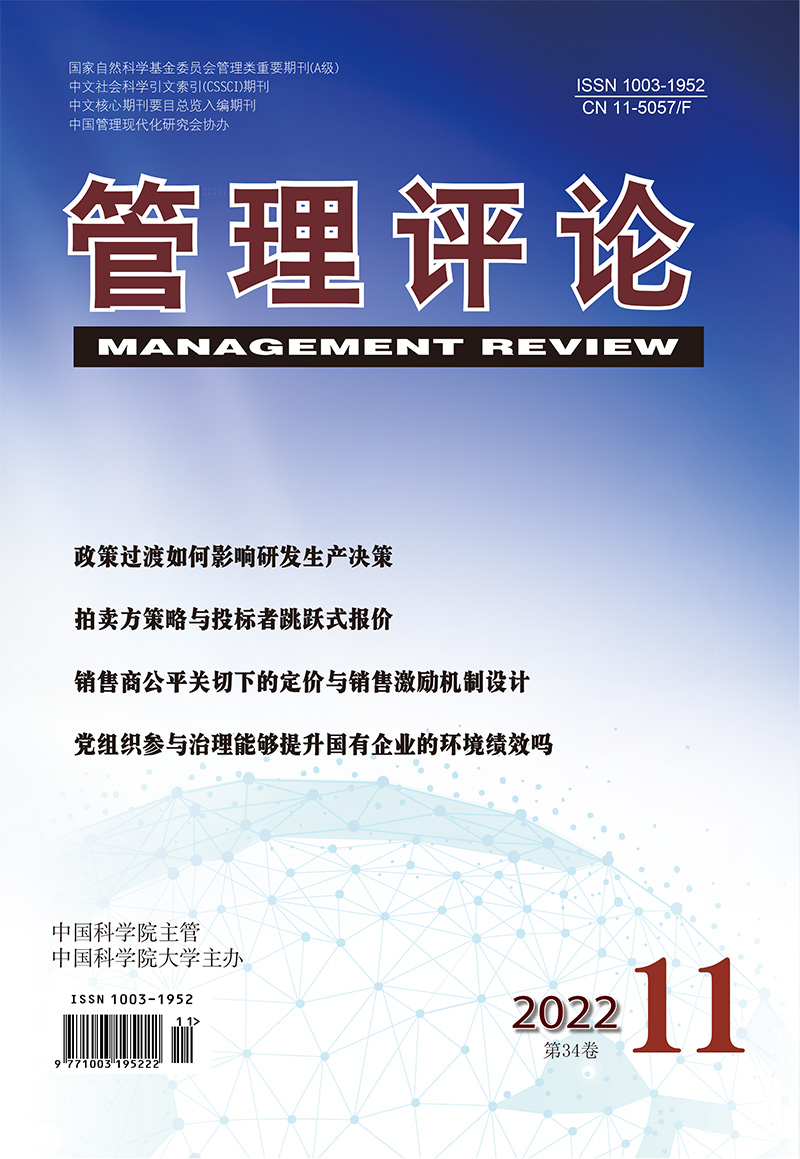|
|
Research on the Construction of Platform Corporate Social Responsibility Symbiosis System
Xin Jie, Tu Yunfeng, Zhang Xiaofeng
2022, 34 (11):
218-232.
In the Internet environment where problems with platform companies’ social responsibilities are often characterized by tremendous harm, wide impact, numerous participants and other new outcomes, symbiotic, collaborative and interactive evolution is becoming increasingly prominent compared with the traditional industrial economic era. Given the widely existing symbiosis in the field of social science and the symbiotic evolution of platforms, this paper combines symbiosis theory with corporate social responsibility (CSR) problems typical of platforms, reviews the four-stage paradigm of corporate social responsibility and summarizes the characteristics of corporate social CSR. On this basis, this paper constructs a platform CSR symbiosis system which contains four elements: symbiotic unit (U), the symbiotic environment (E), symbiotic mode (M) and symbiosis value (V), paraphrases each component definition, analyzes the underlying mechanism and gives the relevant management suggestions. The symbiotic unit (U) mainly involves three subjects: 1) platform CSR operator; 2) regulatory body, industry association and platform technology outsourcing providers; and 3) supplier and demand side, such as settled merchants and registered users. Symbiotic mode (M) refers to the symbiotic relationship and element interaction among the three subjects. It is necessary to optimize and enrich the social responsibility scene, formulate the rules for the symbiotic interface of platforms’ CSR, and ensure the operation of the platform's CSR feedback mechanism. The symbiotic environment (E) is mainly embodied in the symbiotic natural environment and the symbiotic big data empowerment, and the symbiotic value (V) reflects the possibility of using community relationship and network effect to realize value increment. The research in this paper expands the scope of CSR research in the traditional theoretical background, realizes the deepening and integration of CSR theories, guides the symbiosis based social responsibility cooperation and interaction between platform enterprises and participating members, and motivates enterprises to carry out social responsibilities in a larger scope and at a deeper level. The symbiotic scenario, symbiotic interface rules and newly emerging big-data enabled CSR-fulfilling environment for platforms are promoting the CSR-fulfilling management toward a higher level where the symbiotic value and collaborative value of platforms’ CSR can be created and the symbiotic development of both enterprises and environment can be realized in harmony.
References |
Related Articles |
Metrics
|

